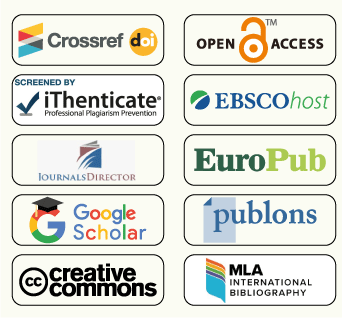Have we always been cyborgs? A critique of Stefan Lorenz Sorgner’s latest transhumanistic work
Abstract
Sorgner, Stephan Lorenzo. 2022. We Have Always Been Cyborgs. Digital Data, Gene Technologies, and an Ethics of Transhumanism. Bristol Univ
Streaming beyond humanism, transhumanism (an abbreviation for transitional humanism) is among the most prominent manifestations of how (emerging) techno-scientific advancements have questioned predominant doctrines concerning humanity and its very condition (Belk 2021a, 2021b; Hall 2017; Sorgner 2016, 2021, 2022; Wolyniak and Harrison 2015). It emerged in the mid-20th century and has become increasingly popular particularly in the United States and Western Europe (See the works of Fuller 2017, 2019; Hansell and Grassie 2010; Huxley 1968; Kurzweil 2005; Lilly 2008; More 2009; Moravec 1988). In essence, it is an intellectual historically changing movement that aims at emancipating humans from not only their psychic and corporeal constraints (through benevolent bio/nano technological enhancement, augmentation, and intensification) but the destructive impacts of the current humanist paradigm as well, via summits of Artificial Intelligence, bringing about life forms with significantly different characteristics other than human (For more detailed accounts, see the vignettes of its prominent forerunners, namely Kurzweil, More, Hughes, Vita-More, Minsky, Drexler, Moravec, and Bostrom).
Keywords
Full Text:
PDFReferences
Belk, Russell. 2021a. “Transhumanism in Speculative Fiction.” Journal of Marketing Management 1–20.
Belk, Russell. 2021b. “Ethical Issues in Service Robotics and Artificial Intelligence.” The Service Industries Journal 41 (13/14): 860–876.
Bialecki, Jon. 2022. Machines for Making Gods: Mormonism, Transhumanism, and Worlds without End. New York, Fordham University Press
Eberl, Jason. 2022. “Enhancing the Imago Dei: Can a Christian Be a Transhumanist?” Christian bioethics: Non-Ecumenical Studies in Medical Morality 28 (1): 76–93.
Elyamany, Nashwa. 2021. “Posthuman Emotion Artificial Intelligence in Postcyberpunk Cityscape: A Multimodal Reading of Blade Runner 2049 (2017).” Insights into Language, Culture and Communication 1 (1): 4–11.
Elyamany, Nashwa. 2022a. “Theorizing the Forensic Gaze and the CSI Shot in the Multimodal Ensemble of CSI: Crime Scene Investigation (2002-2015).” Convergence, 28(1), 170–191.
Elyamany, Nashwa. 2022b. “Postcyberpunk Dystopian Cityscape and Emotion Artificial Intelligence: A Spatio-Cognitive Analysis of Posthuman Representation in Denis Villeneuve’s Blade Runner 2049 (2017).” Convergence, 1–26.
Fuller, Steve. 2017. “The Posthuman and the Transhuman as Alternative Mappings of the Space of Political Possibility.” Journal of Posthuman Studies 1(2): 151–165.
Fuller, Steve. 2019. Nietzschean Meditations: Untimely Thoughts at the Dawn of the Transhuman Era. Basel: Schwabe Verlag.
Godde, Sandra J. 2022. Reaching for Immortality: Can Science Cheat Death?: A Christian Response to Transhumanism. Oregon: Wipf and Stock Publishers.
Gouw Arvin M, Brian Patrick Green and Ted Peters. 2022. Religious Transhumanism and its Critics. Maryland: Lexington Books.
Guerreiro João, Sandra Maria Correia Loureiro, Jaime Romero, Omar Itani and Sara Eloy. 2022. “Transhumanism and Engagement-Facilitating Technologies in Society.” Journal of Promotion Management 28(5): 537–558.
Hall, Melinda. 2017. The Bioethics of Enhancement: Transhumanism, Disability, and Biopolitics. Lanham, MD: Lexington Books.
Hansell, Gregory R and William Grassie. 2011 .H± TransHumanism and Its Critics. Philadelphia: Metanexus.
Huxley, Julian. 1968. “Transhumanism.” Journal of Humanistic Psychology 8, 73–76.
Kurzweil, Ray. 2005. The Singularity Is Near: When Humans Transcend Biology. New York: Penguin Press.
Lilly, Stephen J. 2008. Transhumanism and Society: The Social Debate over Human Enhancement. New York: Springer.
Lupton, Deborah. 2012. “M-Health and Health Promotion: The Digital Cyborg and Surveillance Society.” Social Theory & Health 10 (3): 229–244.
Lupton, Deborah. 2013, “Quantifying the Body: Monitoring and Measuring Health in the Age of M-Health Technologies.” Critical Public Health 23(August): 393–403.
Lupton, Deborah. 2015. “Quantified Sex: A Critical Analysis of Sexual and Reproductive Self-Tracking Using Apps.” Culture, Health and Sexuality 17 (4): 1–14
Mendz, George L and Michael Cook. 2021, “Transhumanist Genetic Enhancement: Creation of a ‘New Man’ through Technological Innovation.” The New Bioethics 27 (2): 105–126.
Moravec, Hans. 1988. Mind Children: The Future of Robot and Human Intelligence. Cambridge: Harvard University Press.
More, Max. 2009. “Hyperagency as a Core Attraction and Repellant for Transhumanism.” An International Journal in Philosophy, Religion, Politics and the Arts 8 (2): 14–18.
Morozov, Evgeny. 2013. To Save Everything Click Here. London: Allen Lane.
Ranisch, Robert and Stephan Lorenzo Sorgner. 2014. Post- and Transhumanism. An Introduction. Frankfurt: Peter Lang.
Sorgner, Stephan Lorenzo. 2016. From Humanism to Meta-, Post- and Transhumanism? Frankfurt: Peter Lang.
Sorgner, Stephan Lorenzo. 2021. On Transhumanism: The Most Dangerous Idea in the World?! Pennsylvania State University Press.
Sorgner, Stephan Lorenzo. 2022. We Have Always Been Cyborgs. Digital Data, Gene Technologies, and an Ethics of Transhumanism. Bristol University Press.
Tyner James A. 2022. “The Monstrous-Feminine, the Colonial Body, and Dr. Moreau: Transhumanism, Racial Capitalism, and the Speculative Fiction of Motherless Birth.” Gender, Place & Culture: A Journal of Feminist Geography.
Wolyniak, Joseph and Peter Harrison. 2015. “The History of ‘Transhumanism’.” Notes and Queries 62 (3):465–467.
DOI: http://dx.doi.org/10.21622/ilcc.2022.02.2.142
Refbacks
- There are currently no refbacks.
Copyright (c) 2024 Nashwa Abdelkader Elyamany

This work is licensed under a Creative Commons Attribution-NonCommercial 4.0 International License.
Insights into Language, Culture and Communication
E-ISSN: 2812-491X
P-ISSN: 2812-4901
Published by:
Academy Publishing Center (APC)
Arab Academy for Science, Technology and Maritime Transport (AASTMT)
Alexandria, Egypt
ilcc@aast.edu

